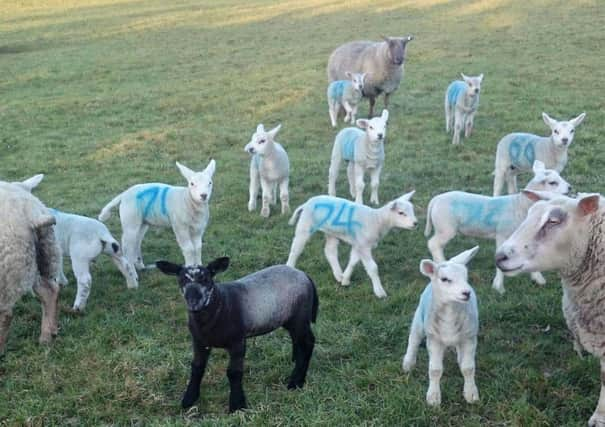DAERA Notes: Beef and sheep


Turn out ewes and lambs to sheltered areas as soon as weather and ground conditions allow. Marking ewes and lambs with large numbers allows easier identification and matching of lambs to ewes. This is useful to monitor and identify mis-mothering and allows individual ewes and their lambs to be brought inside if there are any health issues.
Treat ewes for fluke and worms before turnout. Healthy mature ewes generally have good immunity to most worms so the need to drench is reduced. However, the ewe’s immunity response declines around lambing time which can result in higher numbers of eggs being shed on pasture. This increases the worm burden in lambs later on. To minimise contamination of pasture, treat at least 24 to 48 hours before turnout. If the ewes are already at grass, ideally return to an area which is least likely to be grazed by sheep and lambs. Rotate products based on the wormer group that was used previous. Leaving 10% of ewes untreated will reduce wormer resistance. Only select healthy fit ewes to remain untreated. If treating for fluke, treat all ewes.
BEEF
Calving assistance
Advertisement
Hide AdAdvertisement
Hide AdCheck on progress of cows at calving. Calving usually takes place within two hours of the water-bag appearing for mature cows and three hours for heifers. Intervene if calving hasn’t happened within this time. Check that the calf is positioned correctly, two front feet with the nose above them. Use a calving jack as an aid only, jacking in conjunction with the cows natural contractions. Indiscriminate use can damage both the cow and the calf. Use plenty of lubricant. If inexperienced or unsure seek veterinary help. If the calf shows little sign of life at birth use a piece of straw to irritate the nostrils. This will stimulate the respiratory system. Pouring cold water on the ears may also help to liven up the calf. Hanging a calf over a gate from its back legs can help remove fluid from the airways. However, holding for more than 20-30 seconds can put increased pressure on the lungs as the other organs are pushed downwards on them. Put the calf in the recovery position, sitting up. Difficult calving often results in drowsy calves which are less willing to suckle. If a calf won’t suck from a bottle and teat use a stomach tube. Ideally feed 2.5 to 3.0 litres of the cow’s own colostrum within an hour of birth.
FARM SAFETY
The increased workload on farms at this time of year increases the risk of farm accidents. Be aware of the specific risks on your farm and take action to remove or reduce the risks where appropriate. ‘Stop and Think SAFE’ is a farm safety campaign developed by the Farm Safety Partnership to address the high rate of farm related injuries and fatalities in Northern Ireland. The word ‘SAFE’ focuses on raising awareness of the four main causes of accidents on local farms; Slurry, Animals, Falls (from height) and Equipment. More information on the campaign can be found at: https://www.hseni.gov.uk/articles/stop-and-think-safe
Slurry spreading and cows after calving are particularly high risk on beef and dairy farms at this time of year. Assess all slurry equipment and PTO shafts to ensure they are fitted with secure guards and replace if required. Don’t leave agitation points to slurry tanks open while unattended. Be aware of the risk of hydrogen sulphide gas released from slurry during agitation. Do not agitate on a calm day, wait until there is a breeze which will help dissipate the gas released. Remove all animals from the shed before mixing. As the majority of gas is released in the first half hour after the start of agitating avoid being in the shed during this period. Ideally have a second person present or let someone know what you are doing beforehand.
Cows at calving can be unpredictable and potentially dangerous. Don’t assume a generally quiet cow isn’t capable of an attack, especially if she has a new born calf at foot. Don’t turn your back on a freshly calved cow and have an escape route planned.